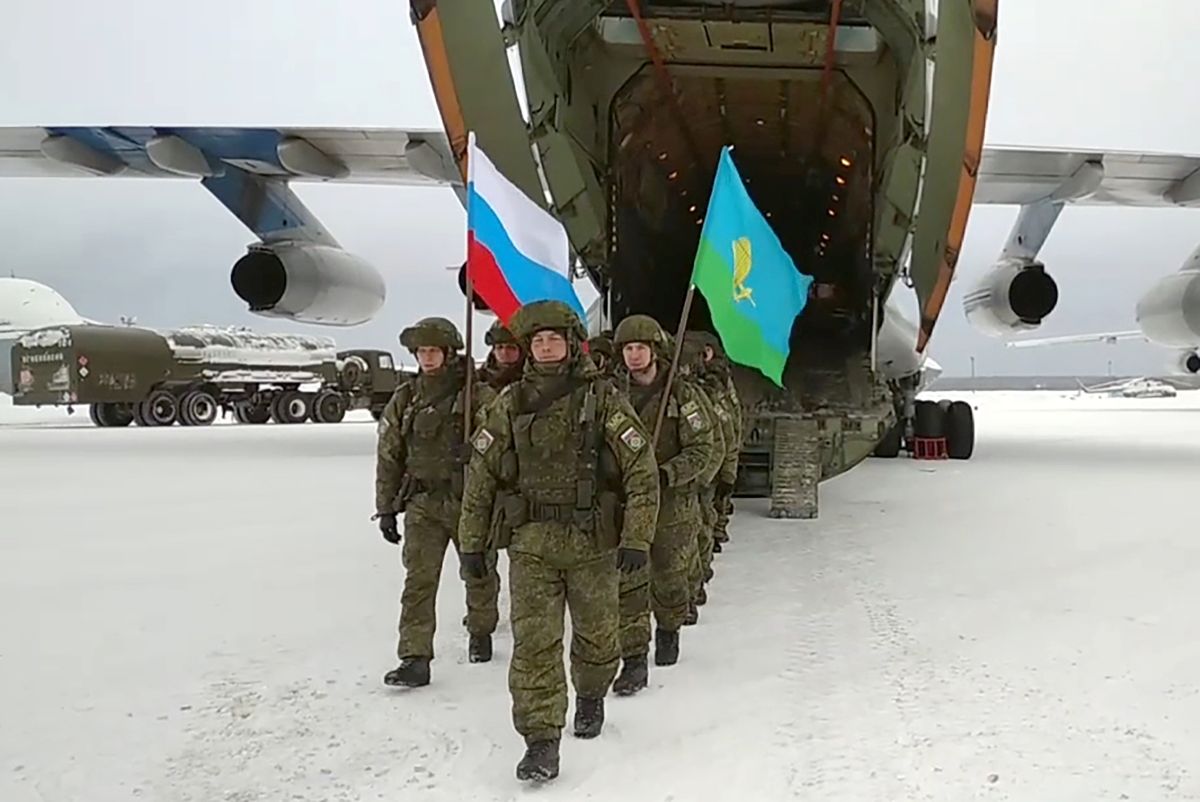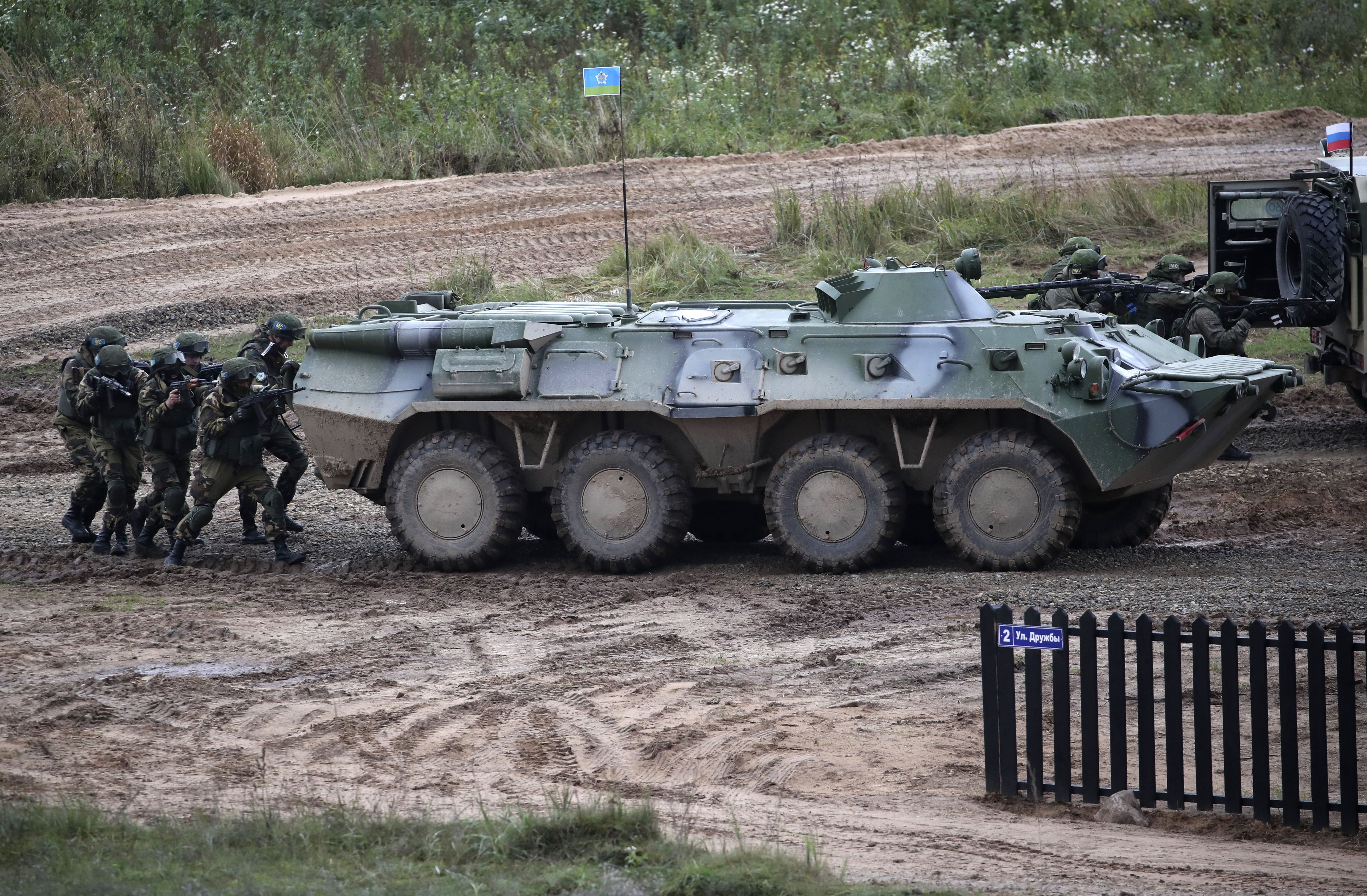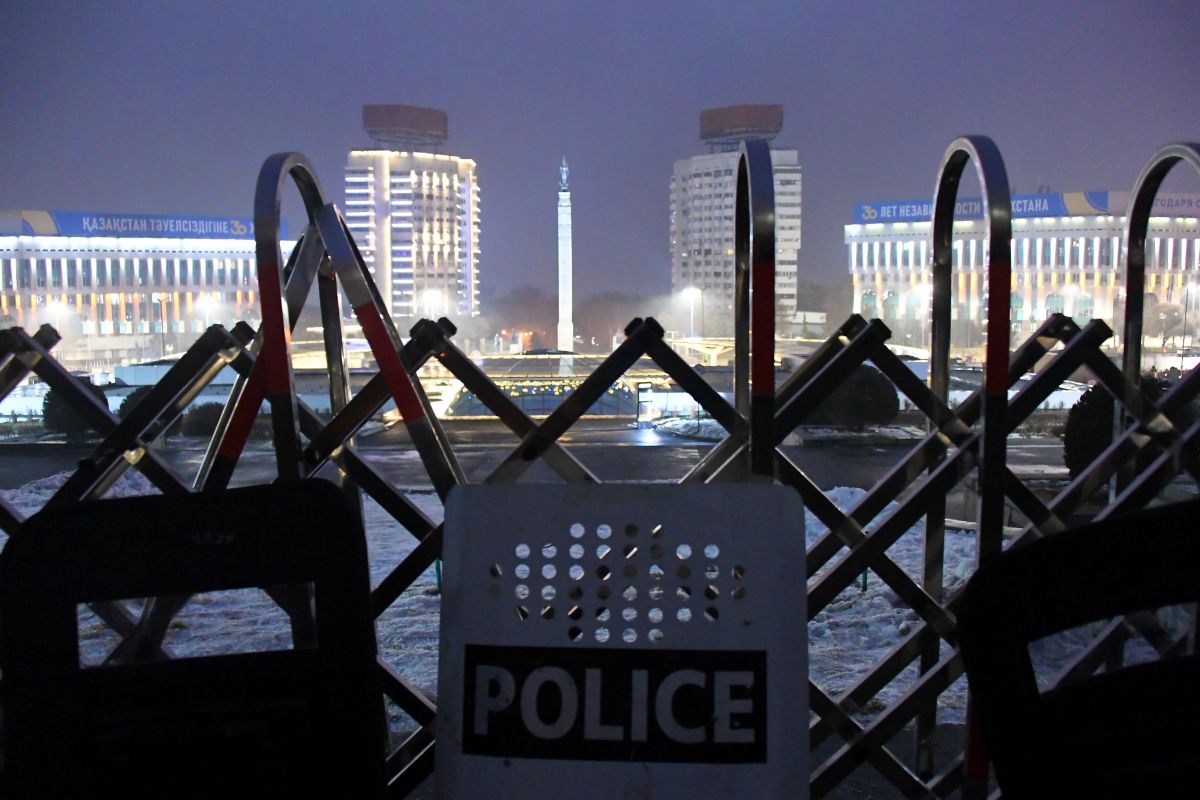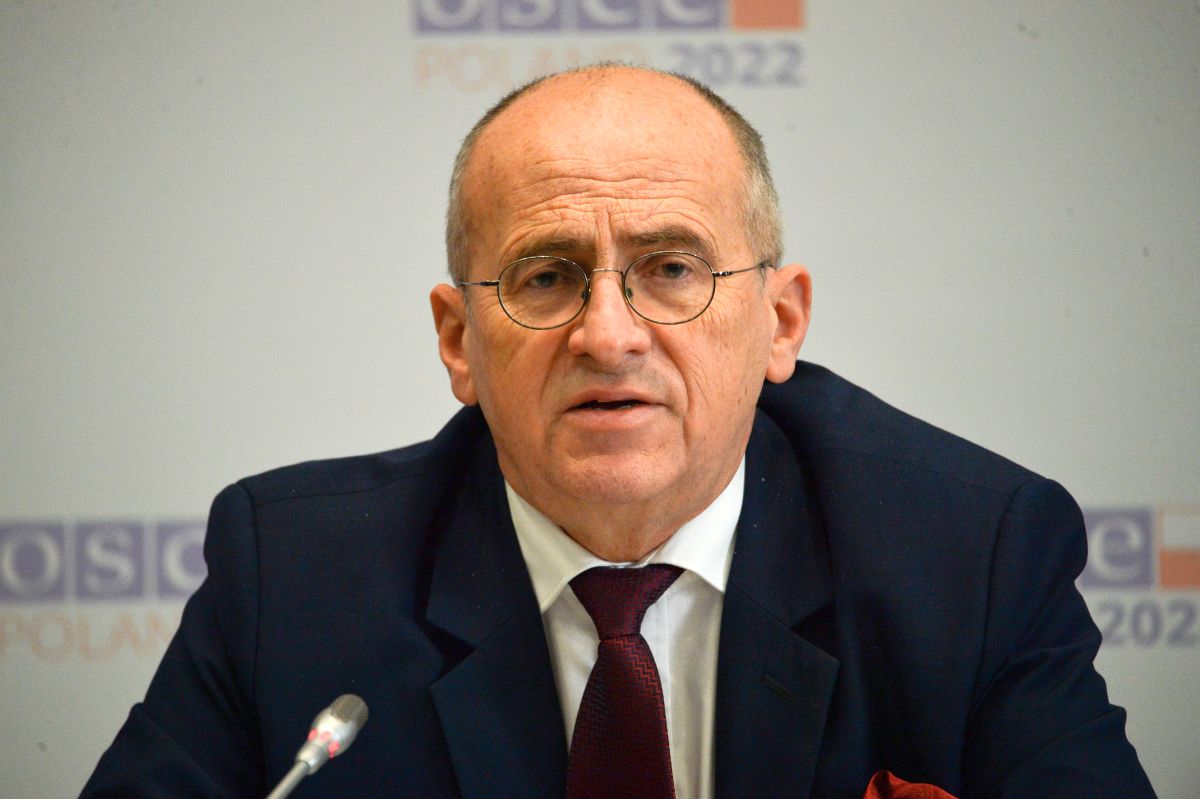The CSTO Operation in Kazakhstan
On 5 January, in response to mass anti-government protests, the president of Kazakhstan asked the Collective Security Treaty Organisation (CSTO) for help. All member states responded positively and the organisation launched its first mission of this kind. For Russia, the mission had significant political and military importance and was an opportunity to demonstrate the CSTO’s potential to conduct military operations in the post-Soviet area.
 Foto. TASS/ Russian Defence Ministry/ FORUM
Foto. TASS/ Russian Defence Ministry/ FORUM
The most important tasks of the CSTO, which was established in 1992 and includes members Armenia, Belarus, Kazakhstan, Kyrgyzstan, Russia, and Tajikistan, are counteracting threats such as terrorism and extremism and challenges to the security of its member states. The organisation operates under the Collective Security Treaty of 1992, of which Art. 4 states that aggression against one member will be regarded as aggression against all members (casus foederis). The term “aggression” is defined in Art. 2 of the treaty as “an armed attack threatening security, stability, territorial integrity and sovereignty”, but it does not indicate that it must come from the outside. The Collective Security Strategy for 2016-2025 defines the territory of the member states as an area of responsibility of the CSTO. According to this document, the most important goals of the CSTO are the expansion of political and military cooperation among the member states and protection against threats from the organisation’s environment (NATO is implied, but not mentioned directly). In practice, although undeclared, the main goal is to prevent “colour revolutions” in the territory of the former USSR, and thus to keep in power autocratic regimes favouring Russia.
Operation Background
On 2 January, massive protests broke out in western Kazakhstan over the deteriorating economic situation, including dramatic price rises. The protests spread throughout the country, often becoming violent. Initially, President of Kazakhstan Kassym-Jomart Tokayev blamed “radical Islamist organisations”, which were supposed to have been inspired from outside, for the riots. He stated that the protests had become a threat to state security and, therefore, on 5 January he asked the CSTO to launch a stabilisation anti-terrorist operation on the basis of Art. 4 of the Treaty On Collective Security. The request for support was addressed to the chair of the CSTO, which currently is Armenia.
Course of Action
Immediately after receiving the application and a positive decision of the Collective Security Council, Prime Minister of Armenia Nikol Pashinyan announced the launch of a peacekeeping operation. Rapid Reaction Forces (KSOR), established in 2009 and consisting of 3,500 soldiers in constant, increased combat readiness, were assigned to the mission.
Russia deployed troops from the airborne units of the 98th Guards Airborne Division, the 31st Separate Air Assault Brigade, and the 45th Guards Special Purpose (Spetsnaz) Detached Brigade, which in recent years took part in the war in Georgia, the seizure of Crimea, and the intervention in Syria. Belarus sent 500 troops to Kazakhstan from the 103rd Independent Guards Airborne Brigade, Armenia sent 100 from the 12th Peacekeeping Brigade, Kyrgyzstan activated 150 from the “Scorpion” 25th Special Forces Brigade, and Tajikistan sent 200 troops. In total, according to CSTO Secretary-General Stanislav Zas, 2,500 troops were sent to Kazakhstan.
Russia allocated 70 Il-76 (NATO: Candid) and 5 An-124 (NATO: Condor) aircraft to transport CSTO forces. The experience gained by the Russian armed forces in Syria and operations in Nagorno-Karabakh was visible as the entire contingent, including equipment, was deployed in less than 72 hours. By that time, the CSTO forces had achieved full combat readiness, demonstrating a similar level of readiness as the Very High Readiness Joint Task Force that is part of the NATO Response Force at the highest combat readiness level.
After being transferred to Kazakhstan, the CSTO forces were directed to places designated by the local authorities. Their main task was to protect state and military facilities (airports, ammunition depots, public buildings such as heat and power plants, bakeries, etc.) and to help the Kazakh security services. After stabilisation of the situation, on 13 January the CSTO forces began withdrawing, starting with the smallest contingents. The operation ended on 19 January.
Political Importance
Thanks to the presence of the CSTO forces, Tokayev was able to increase the number of Kazakh units aimed at “restoring order” in the country. The CSTO contingents also allowed him to purge the state’s security structures of people associated with the former president, Nursultan Nazarbayev. With high probability it can also be assumed that by calling on the CSTO, Tokayev wanted to avoid a situation in which Russia would act on its own under the pretext of protecting Russians, which comprise a significant group living in the north of the country. For Tokayev, who has been ruling the country since 2019, the CSTO operation was also a test of the allied loyalty of the other member states to him and his regime.
In turn, Russia, by making a quick decision to transfer forces to Kazakhstan, significantly participating in the operation, and coordinating the actions of its allies, emphasised that Kazakhstan, and more broadly Central Asia, are the CSTO’s area of responsibility—a clear signal to Turkey and China, which also have interests in the region.
Military Importance
For the CSTO members, this was the first test of the KSOR forces’ ability to react quickly. It was also a practical implementation of scenarios from regular manoeuvres, such as Combat Brotherhood, Indestructible Brotherhood or Interaction, during which the use of special forces for anti-terrorist activities was practiced. The course of the operation showed that the CSTO countries have implemented the lessons learnt from these exercises.
The activities in Kazakhstan were an opportunity to check the interoperability of the KSOR forces, which are the best-trained units, under the conditions of the operational use of forces. It was also an opportunity to test the command of the combined forces, based on the capabilities and experience Russia gained during the annexation of Crimea and the intervention in Syria.
The efficient conduct of the operation was also a political and military signal to NATO and neighbouring countries such as Ukraine. Russia has shown that it is able to act quickly and decisively in the event of a threat to territory it deems essential for its security.
Conclusions
Considering that this was the first CSTO operation launched by a Member State under Art. 4 of the Treaty on Collective Security, the CSTO is an important tool for Russia to control its neighbourhood. It wanted to signal both to its partners and also to the West that the organisation is able to operate efficiently and quickly respond to a crisis in any member state. In the political dimension, the operation has shown that Russia will prevent the involvement of other actors in the organisation’s area of responsibility. It also proved that the CSTO can be a tool to suppress unrest and protests in the Member States. Following Tokayev’s lead, other leaders may be inclined to call in similar support, citing some alleged threat to the state’s stability in the face of pro-democratic protests. In future, such interventions may therefore be undertaken not only in Tajikistan, which is exposed to the influence of radical Islamists from Afghanistan, but also in Belarus, where the authorities may see it as the ultimate instrument to stay in power.
The military dimension of the operation confirmed Russia’s domination of the CSTO as this member secured its most important elements (logistics, command). It also confirmed the growing Russian capabilities to deploy rapid-reaction forces, which is important information for NATO in terms of further adaptation to the threats posed by Russia and protection of the countries of the Eastern Flank. It also showed that despite the significant concentration of forces on the border with Ukraine, Russia was able to simultaneously pursue a mission in Central Asia, although the operation was relatively small, both in the number of troops involved and the duration, and did not require many military activities. It is still an open question as to Russia’s ability to simultaneously engage in two operations of a broad scale in different strategic directions.





